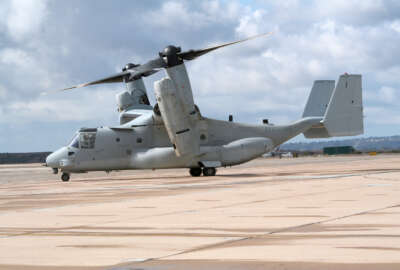DoD learns important lesson in developing coalition network
NATO and its members say a network they constructed to tie together the national networks of the various militaries operating in Afghanistan is a success story —...
U.S. Defense leaders and their counterparts from other nations say a network infrastructure linking coalition partners in Afghanistan has fundamentally changed the way the multinational effort has been conducted over the last several years. The only problem: it took nearly a decade to get it up and running.
NATO, the U.S. military and other national forces say the Afghan Mission Network (AMN) as it now exists has been a game changer for operations in Afghanistan. Earlier efforts didn’t work so well. One progenitor to the AMN, geared toward bridging simple email capabilities between U.S. and NATO, was so cumbersome and hard to use that it went out of service for more than a month and no one noticed, according to a NATO official.
Today’s Afghan Mission Network is the result of requirements established by the top coalition general in Afghanistan, and it began to get up and running in earnest in 2009. Today, the U.S., the United Kingdom and other coalition members are using it not just for email, but for voice and video communications and even sensitive intelligence and reconnaissance data. 
“A lot of times when a network is built, you just build this background. Build the network and they will come,” he said. “In this case, it was not done that way. They said ‘these are the organizations that are out there. Let’s build a network that will connect them.’ It turned out to be a truly successful approach.”
Up and running quickly
Once the approach was settled on, the network got up and running relatively quickly in response to the demands placed on interoperability by the surge of U.S. troops into Afghanistan in 2009. Officials declared initial operating capability for the network in 2010.
“They abandoned the traditional acquisition process, because they realized they needed this network quickly,” Strong said. “They collapsed a number of the steps, and one of the important things that enabled them to do that was the fact that the [commander of the International Security and Assistance Force, then-Gen. Stanley McChrystal] was demanding this network. When you get the support of the four-star over there and he’s saying it’s his number one priority, it’s amazing how fast things can get done.”
One principle of the network was to keep it as simple as possible, allowing connectivity between the IT systems each nation was already bringing to the fight without pushing each country’s warfighters onto systems they had never trained on.
“We are living the dream of a network that, in my experience, transcends the geographic, the joint operating area, the national and all the other caveats that we have previously chosen to impose upon ourselves at the expense of our ability to conduct an operation,” said Brigadier Andy Bristow, the chief of staff of the British national contingent in Afghanistan, who describes himself as a customer of the Afghan Mission Network. “But it’s almost extraordinary that it is extraordinary. It seems to me that this is the basic prerequisite for combat operations.”
And now that they’ve seen that a multinational network which links each country’s own systems on the battlefield can work, NATO and its members are trying to take lessons from the Afghan effort and to make sure it doesn’t take so long to establish that level of information sharing capability in the next coalition operation. They’re treating the Afghan Mission Network not just as something that’s in use today, but as the test bed for a longer-term vision that’s being called the Future Mission Network. 
Standards needed to be aligned
Simpson said at the same time, it’s unrealistic to expect to construct mission networks completely from scratch for every future contingency, if only because of cost constraints. Because of that, nations will have to align to standards to some degree.
For the most part, that will have to mean commercial standards, Bristow said.
“It seems to me that sometimes in the military community, we are not helping ourselves, because we are over specifying what we are after,” he said. “We are forcing industry into stovepipes before we even start just because of the specifications we’re putting on our systems. It seems to me that we ought to be looking to industry to exploit its expertise. And we’re not the main driver anymore. The reality is that the network exploitation of the banking sector and every other industry in the world is now the biggest customer. I think we have to recognize that therefore our buying power and influence to determine standards comes at a very significant cost. We have to make sure we’re not demanding the 100 percent solution and being charged through the nose for it.”
Even as DoD and NATO allies look to future networks, they’re not done building the current one. Strong said the Afghan Mission Network’s structure allows allies to quickly and incrementally bring new capabilities on line as they’re developed.
One next major piece of capability will be to build a framework of core services linked to authoritative data sources. The hope is that it will allow any nation that wants to quickly join the network to plug into the specific services they need without major reconfigurations to their own national networks.
RELATED STORIES:
Army readies new network standards
DoD to demo rapid IT acquisition
Copyright © 2025 Federal News Network. All rights reserved. This website is not intended for users located within the European Economic Area.
Jared Serbu is deputy editor of Federal News Network and reports on the Defense Department’s contracting, legislative, workforce and IT issues.
Follow @jserbuWFED






